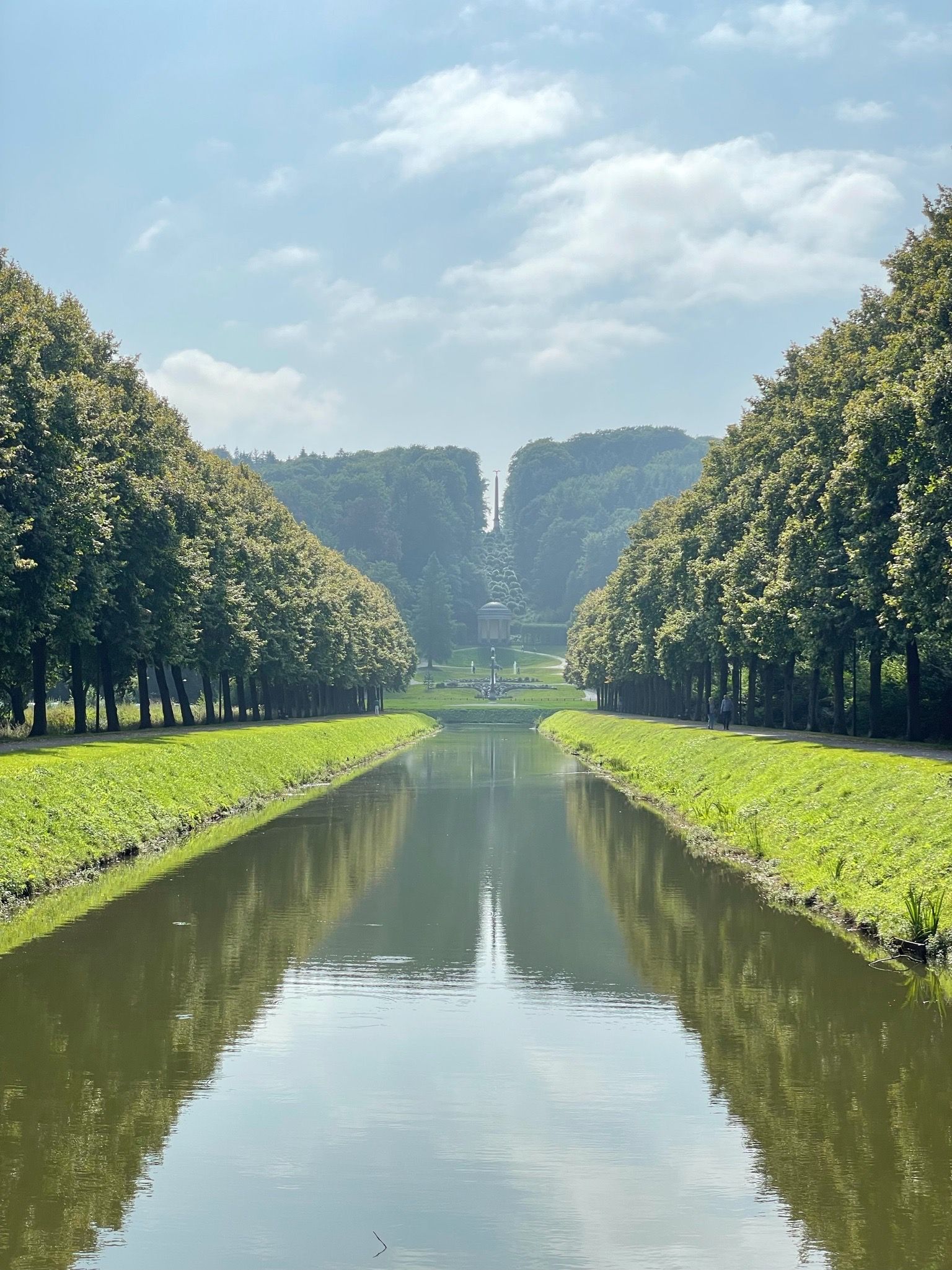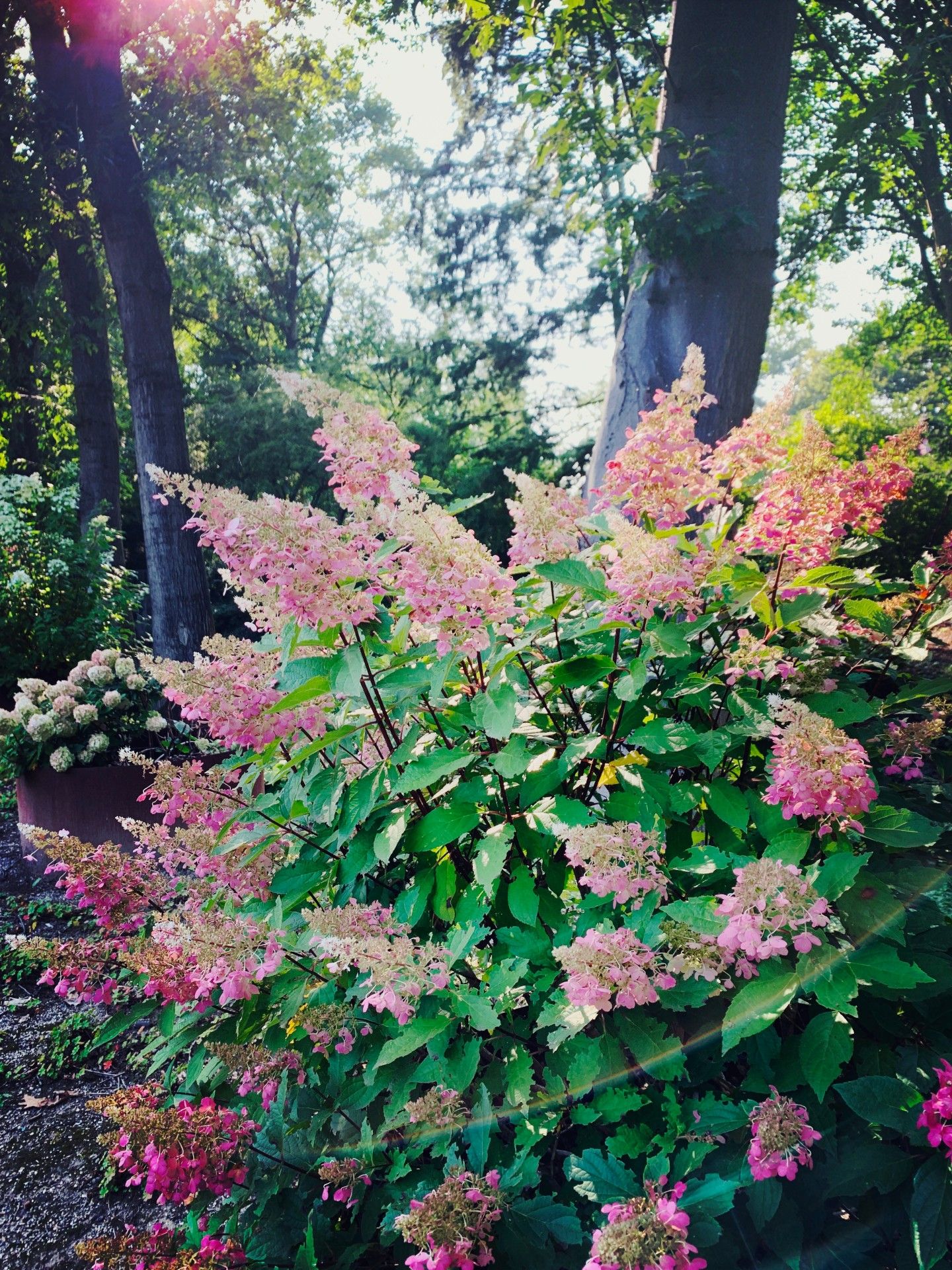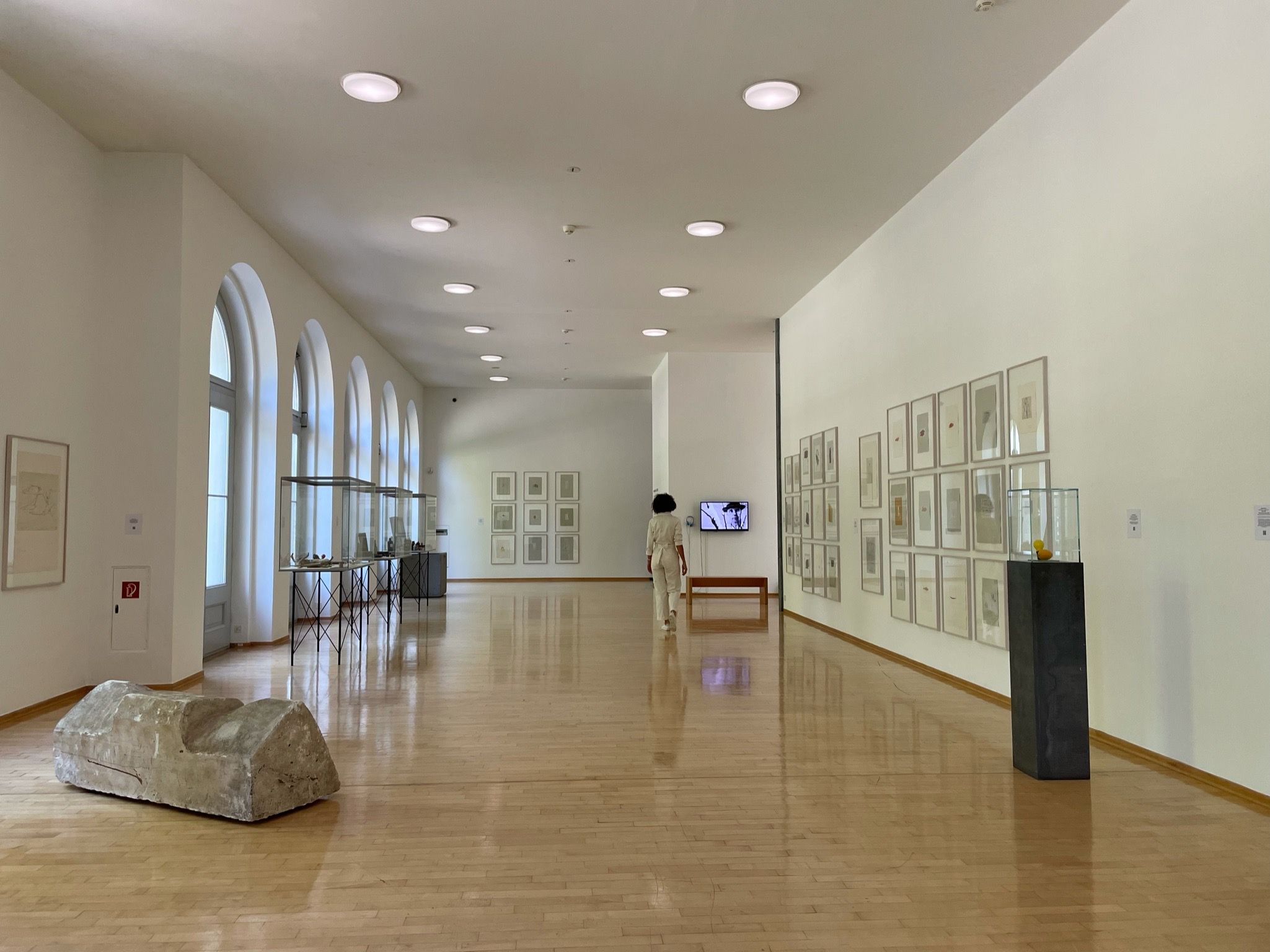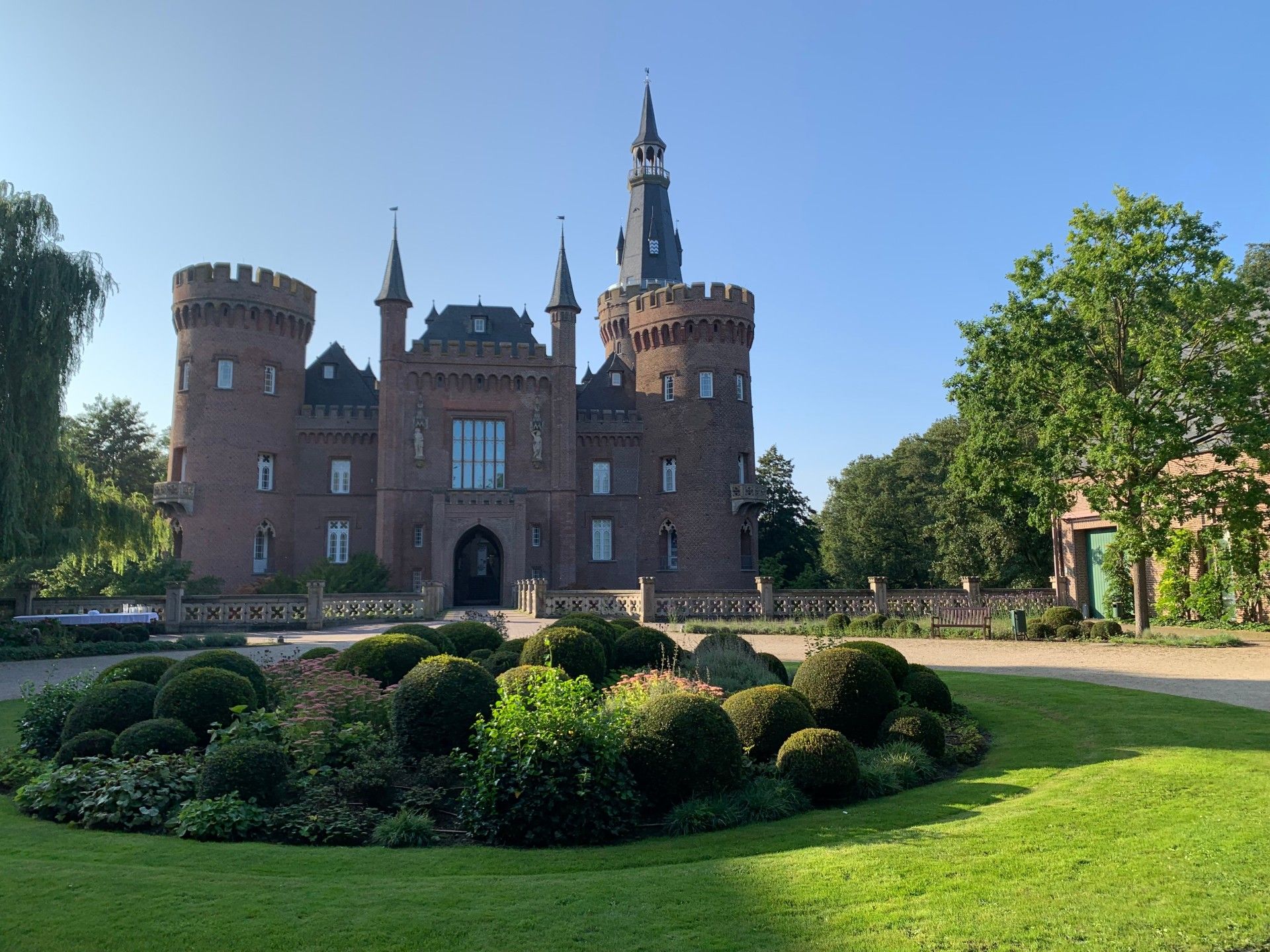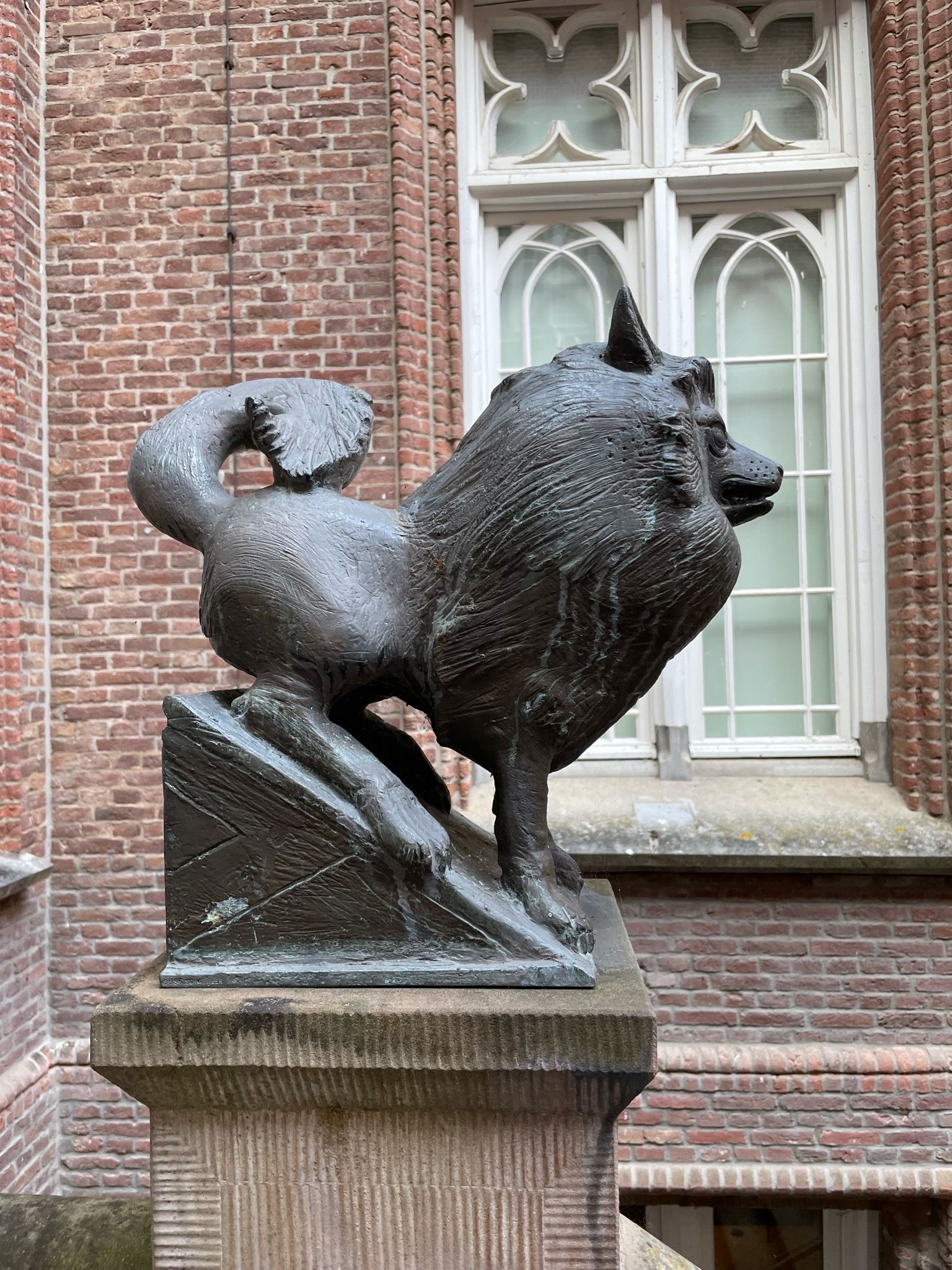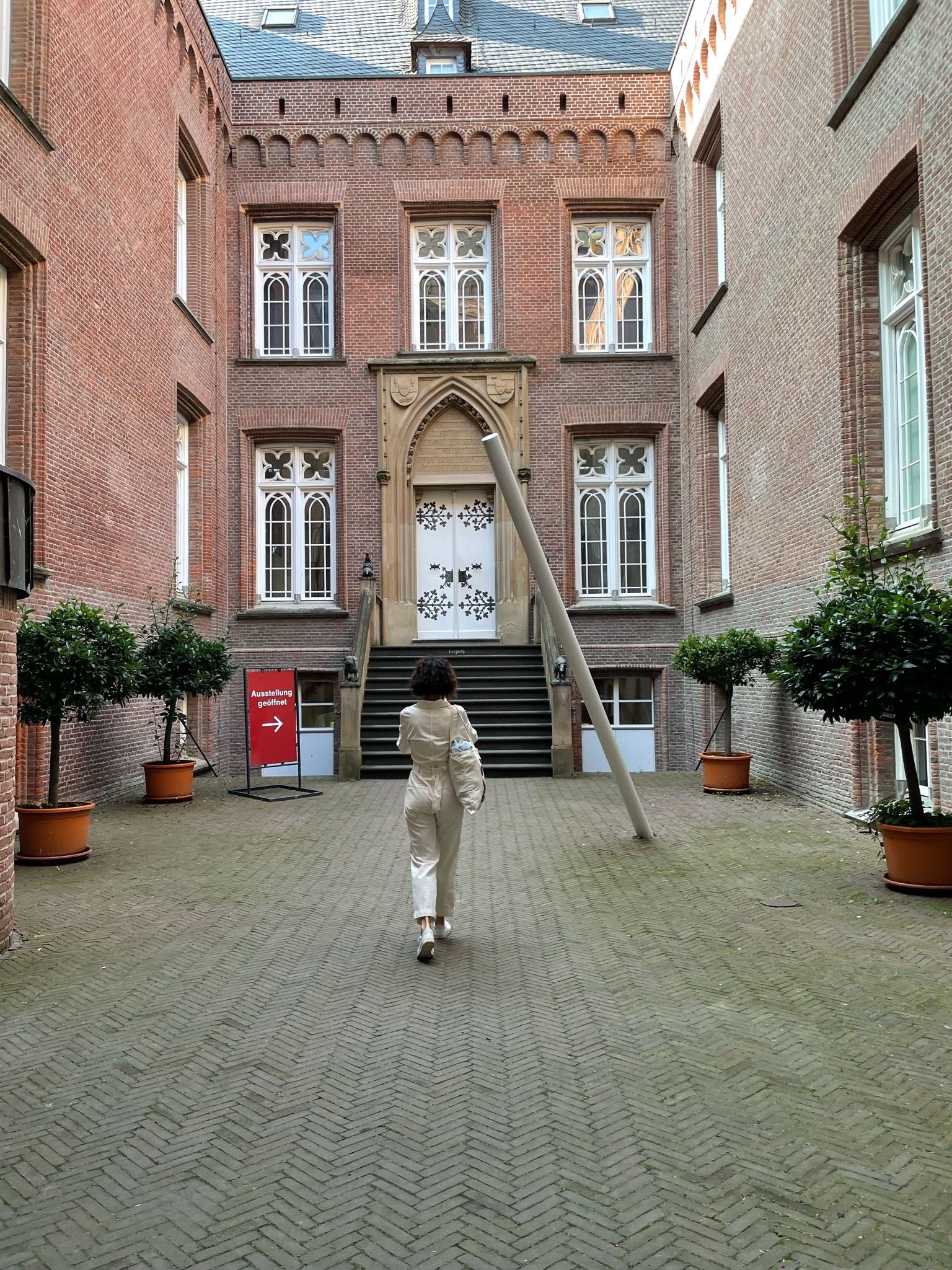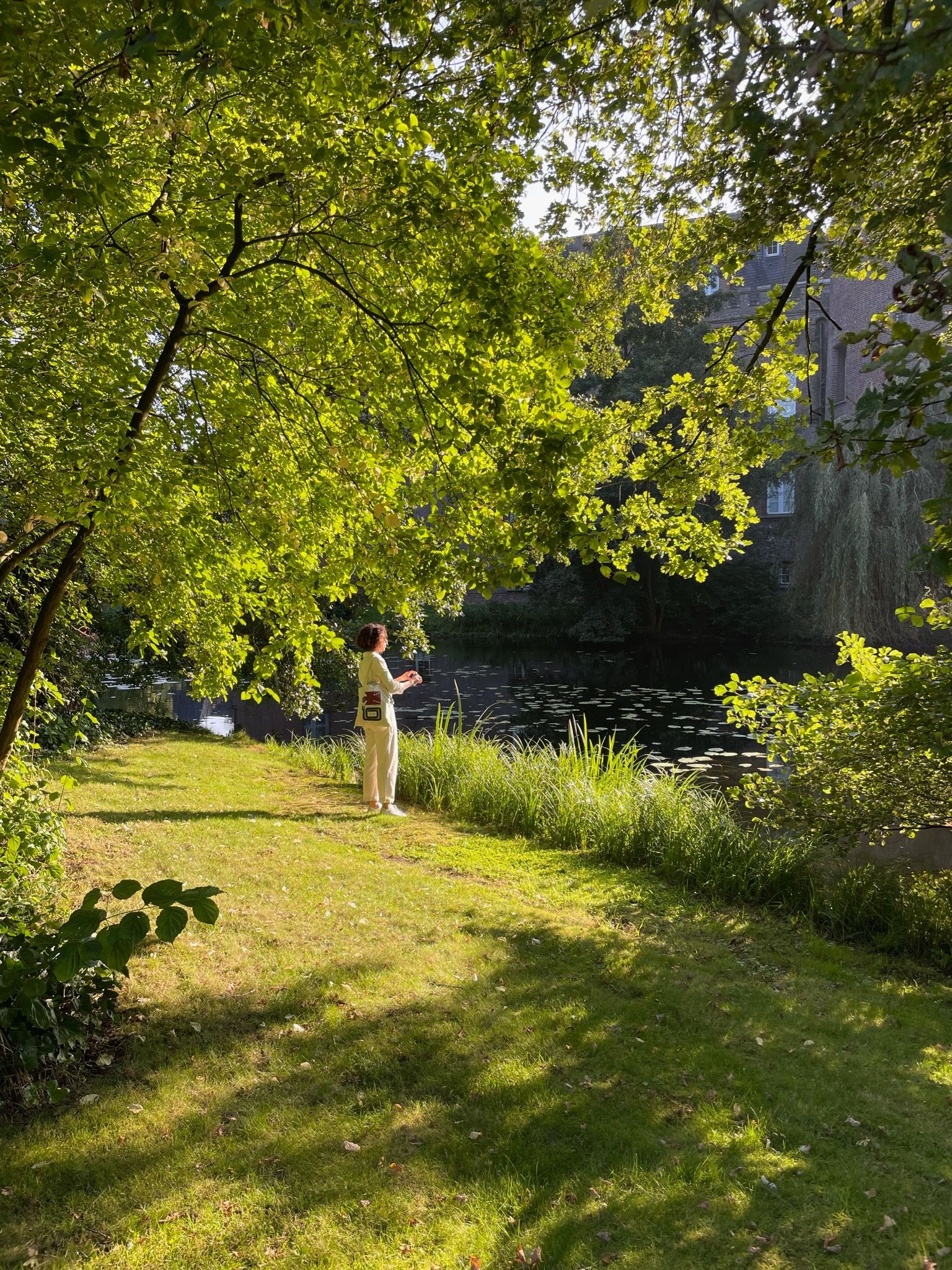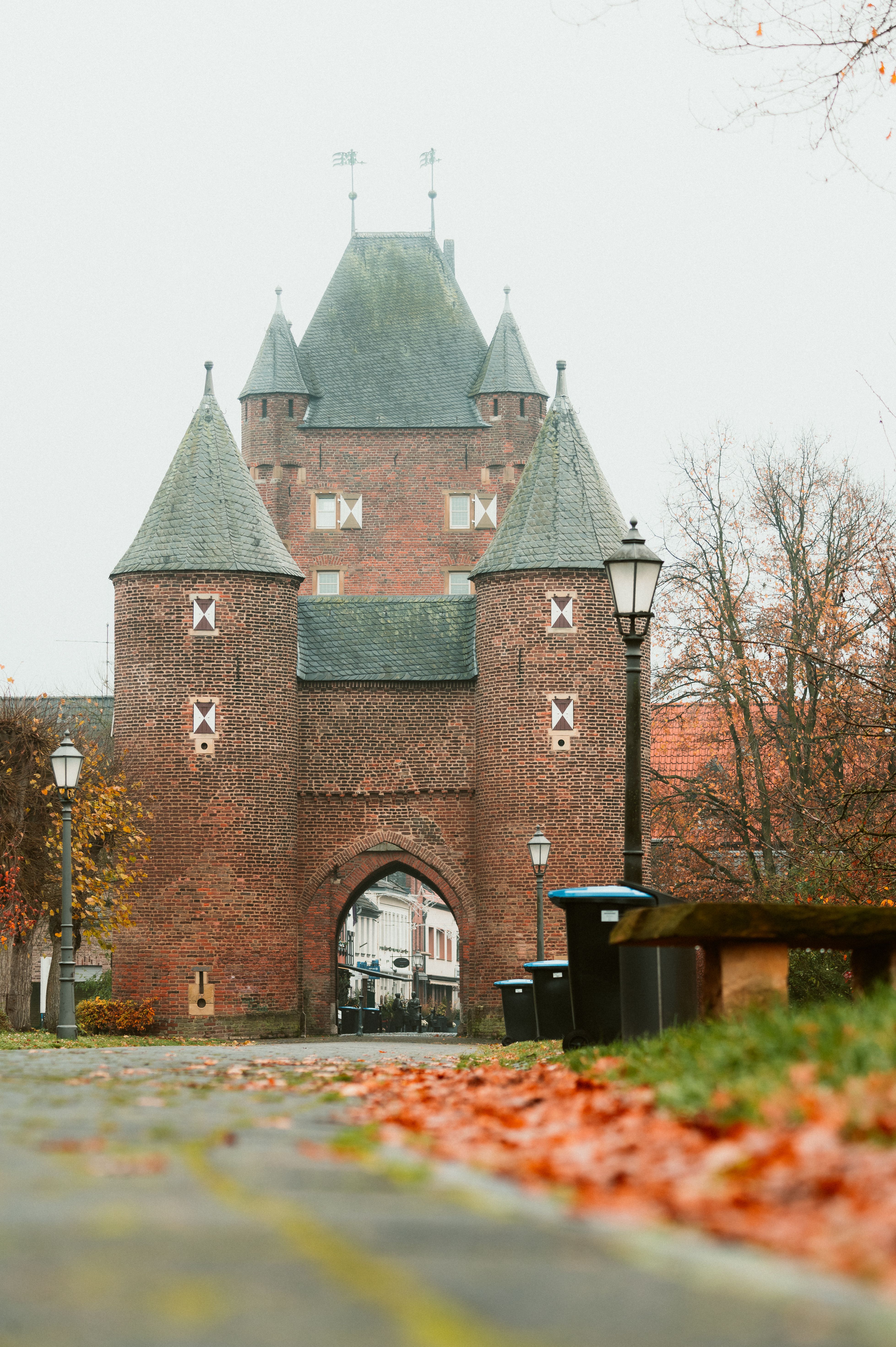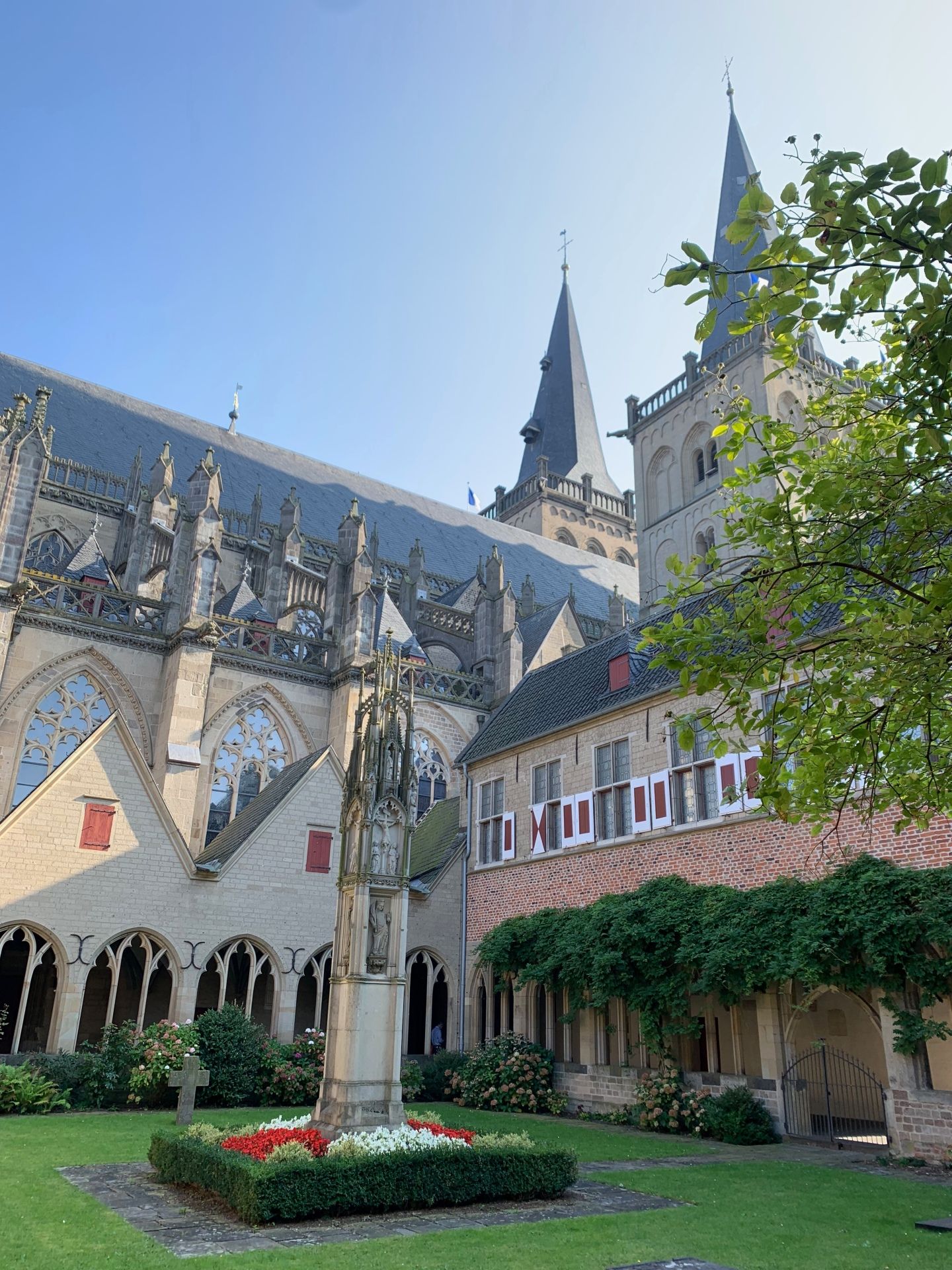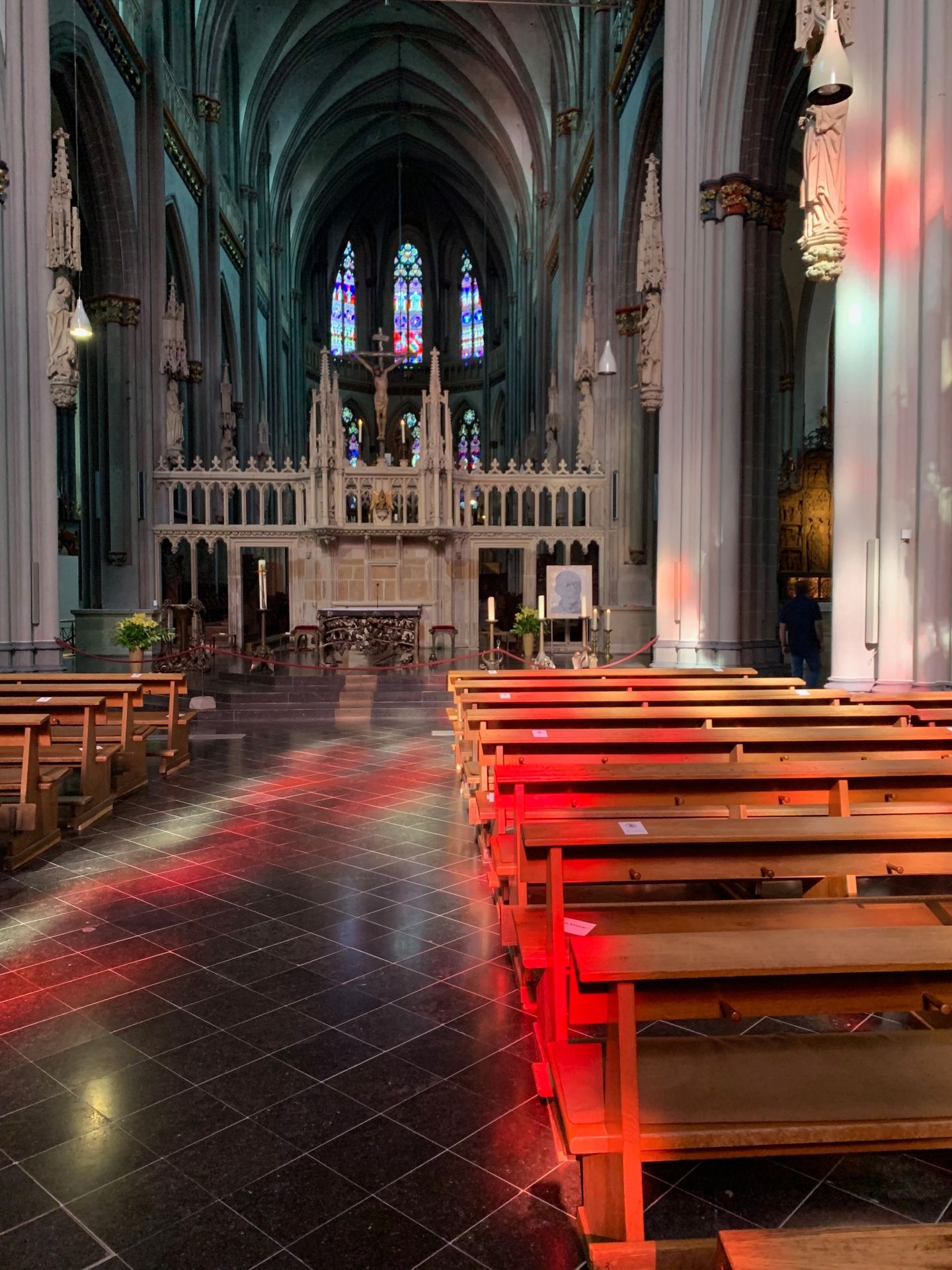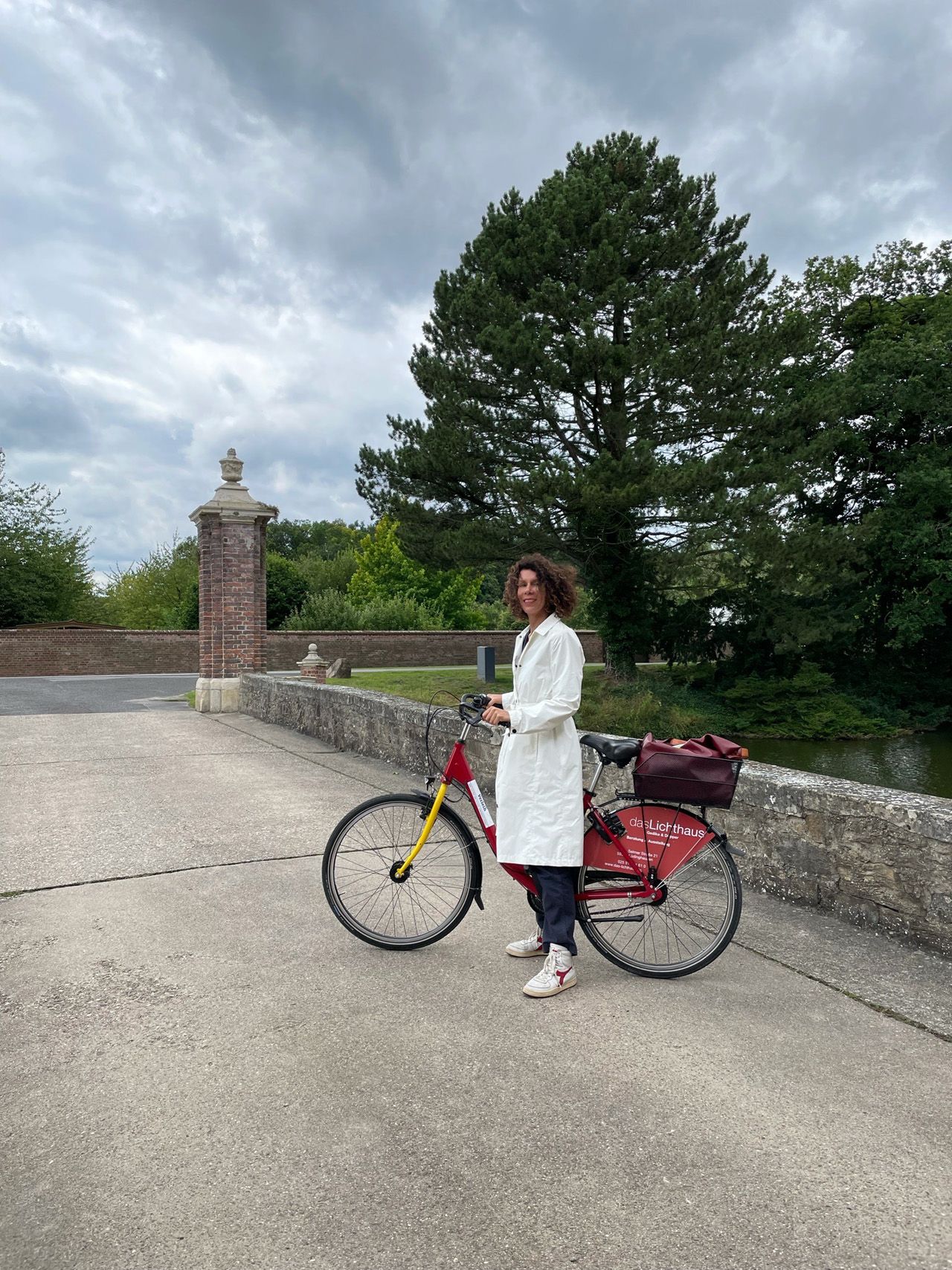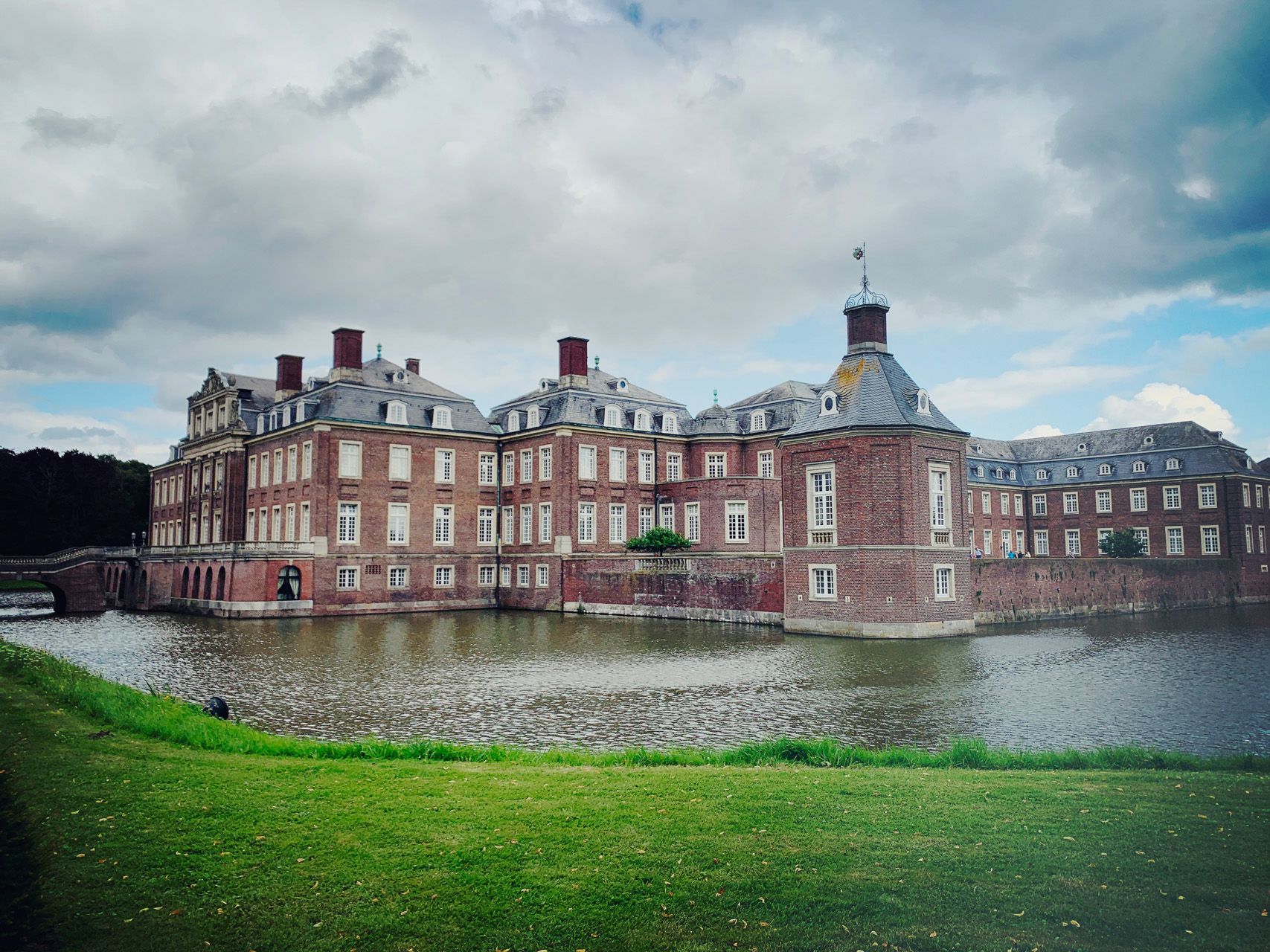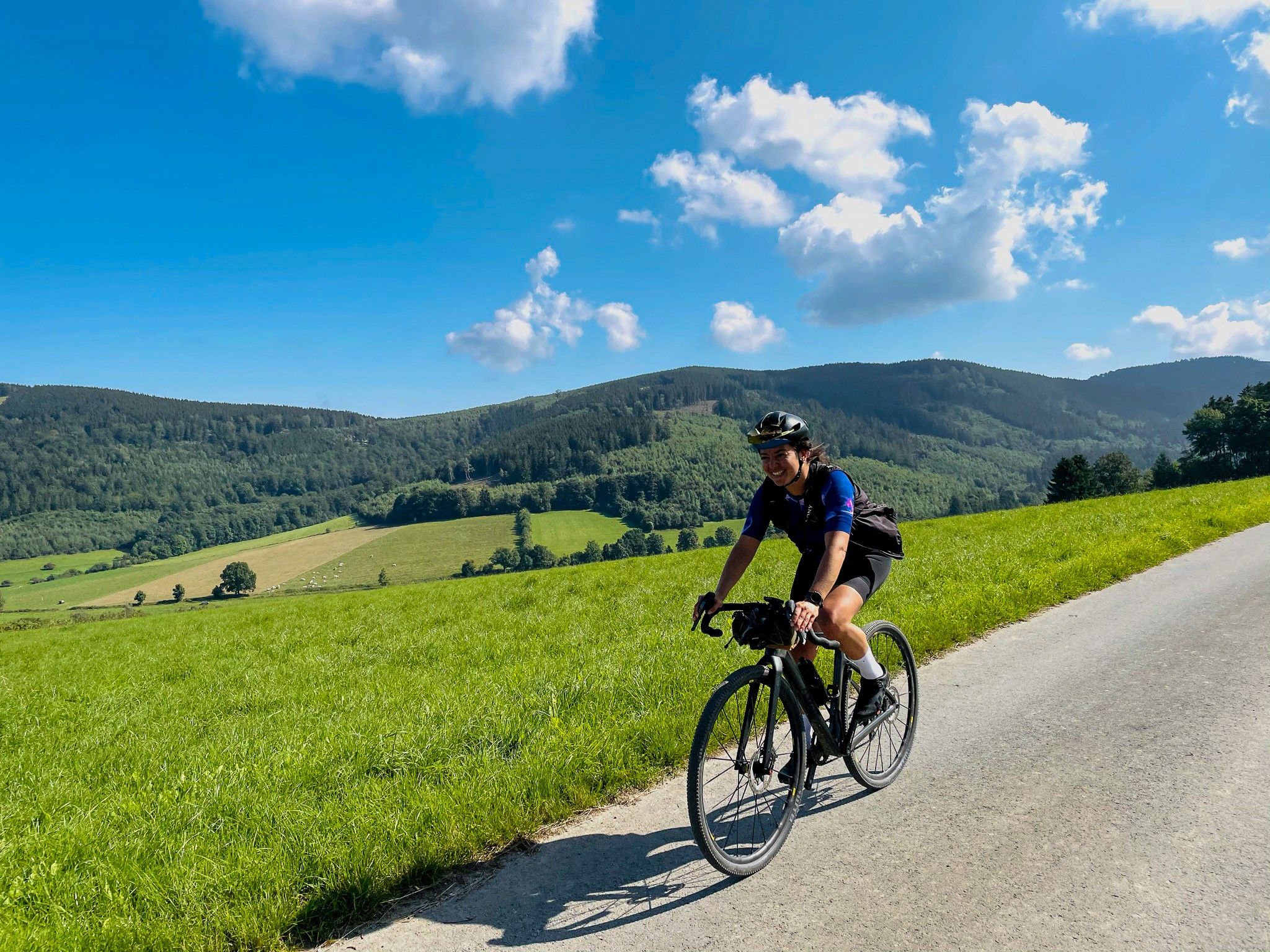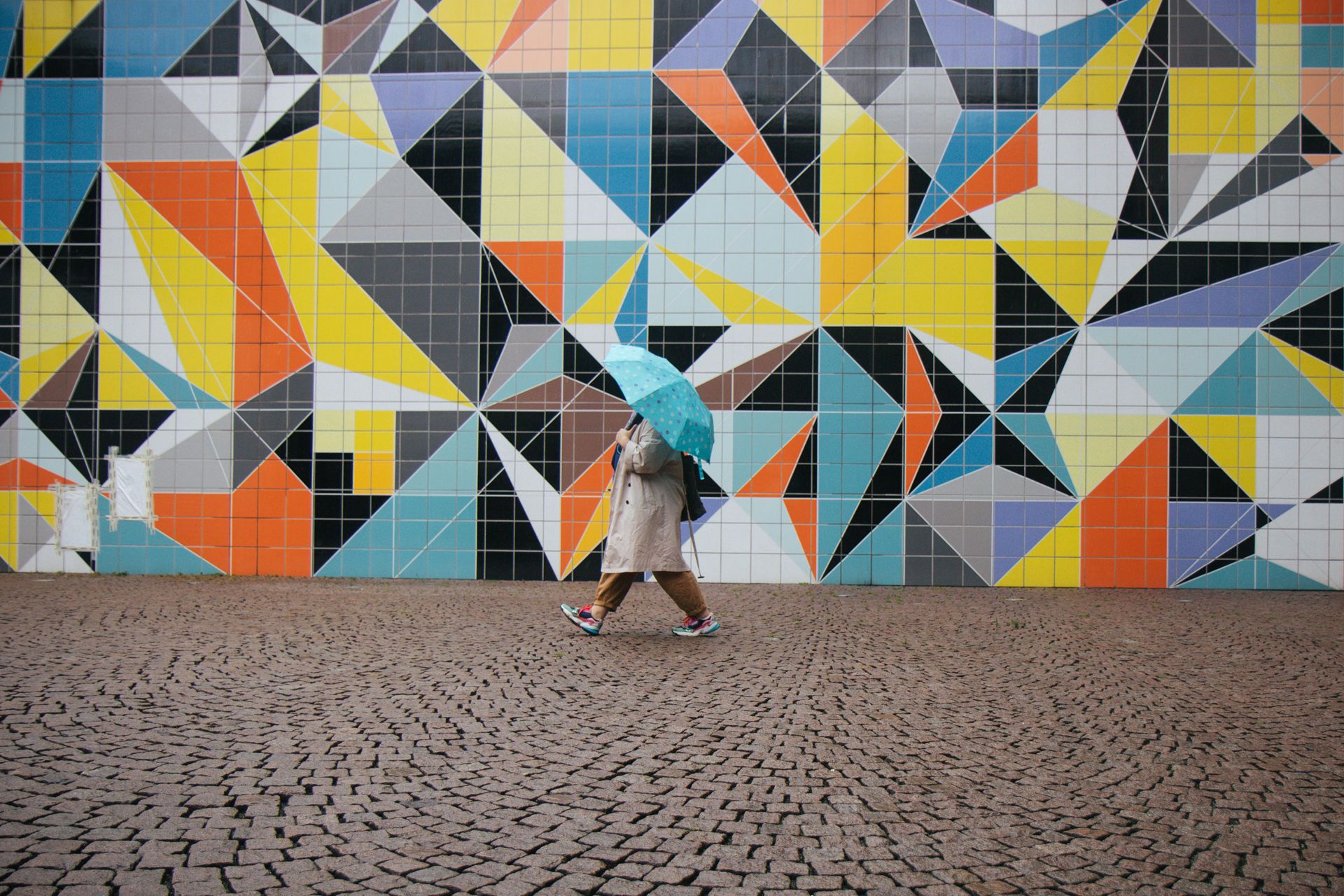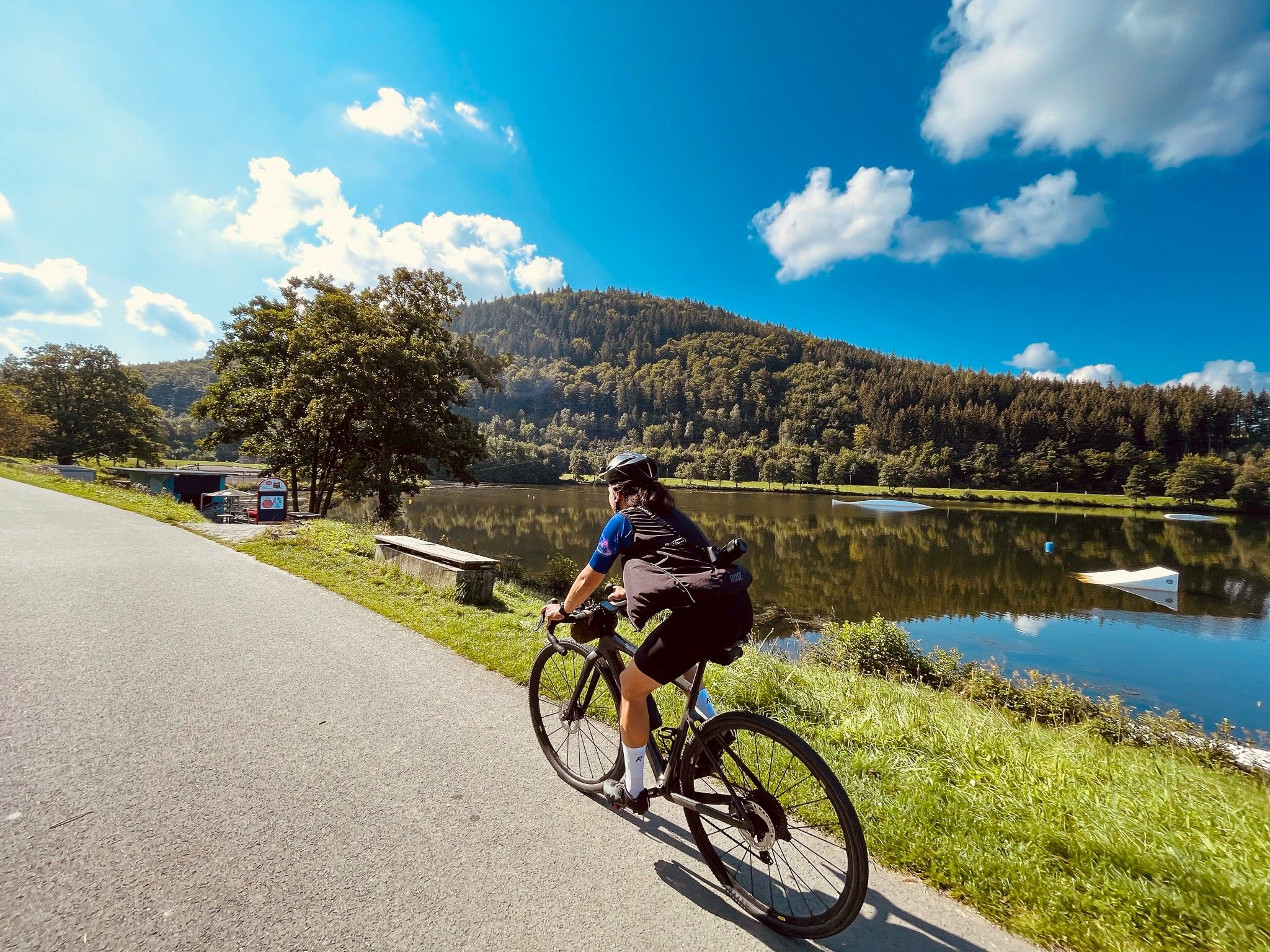In the Lower Rhine region, the land is so flat that you can already see today who will be visiting tomorrow. Instead of hills and valleys, the area along the lower Rhine offers other highlights: old Roman towns, medieval church treasures and important places in the life of Joseph Beuys. A cycle tour that won't get you out of breath too quickly - but will regularly amaze you.
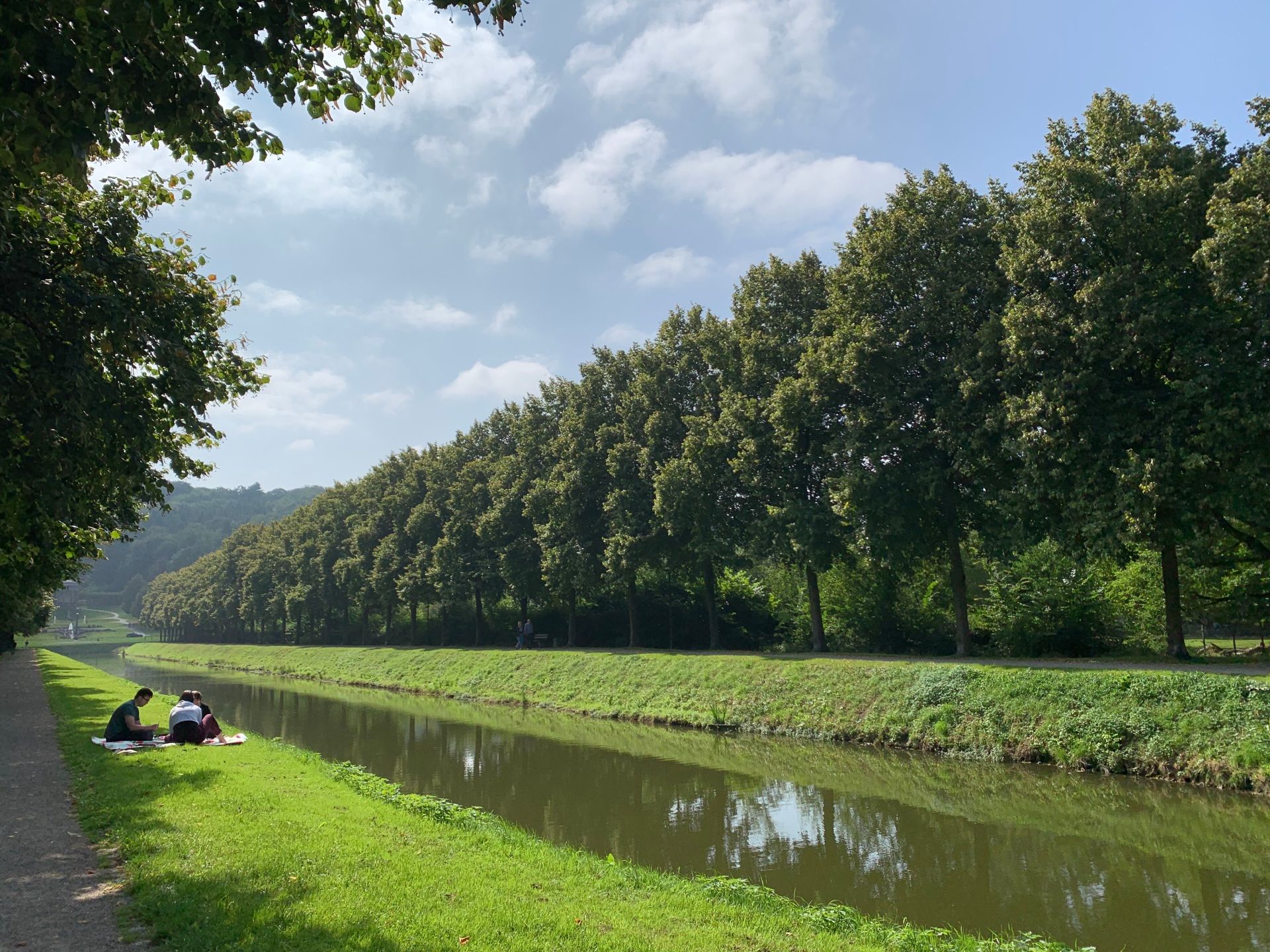
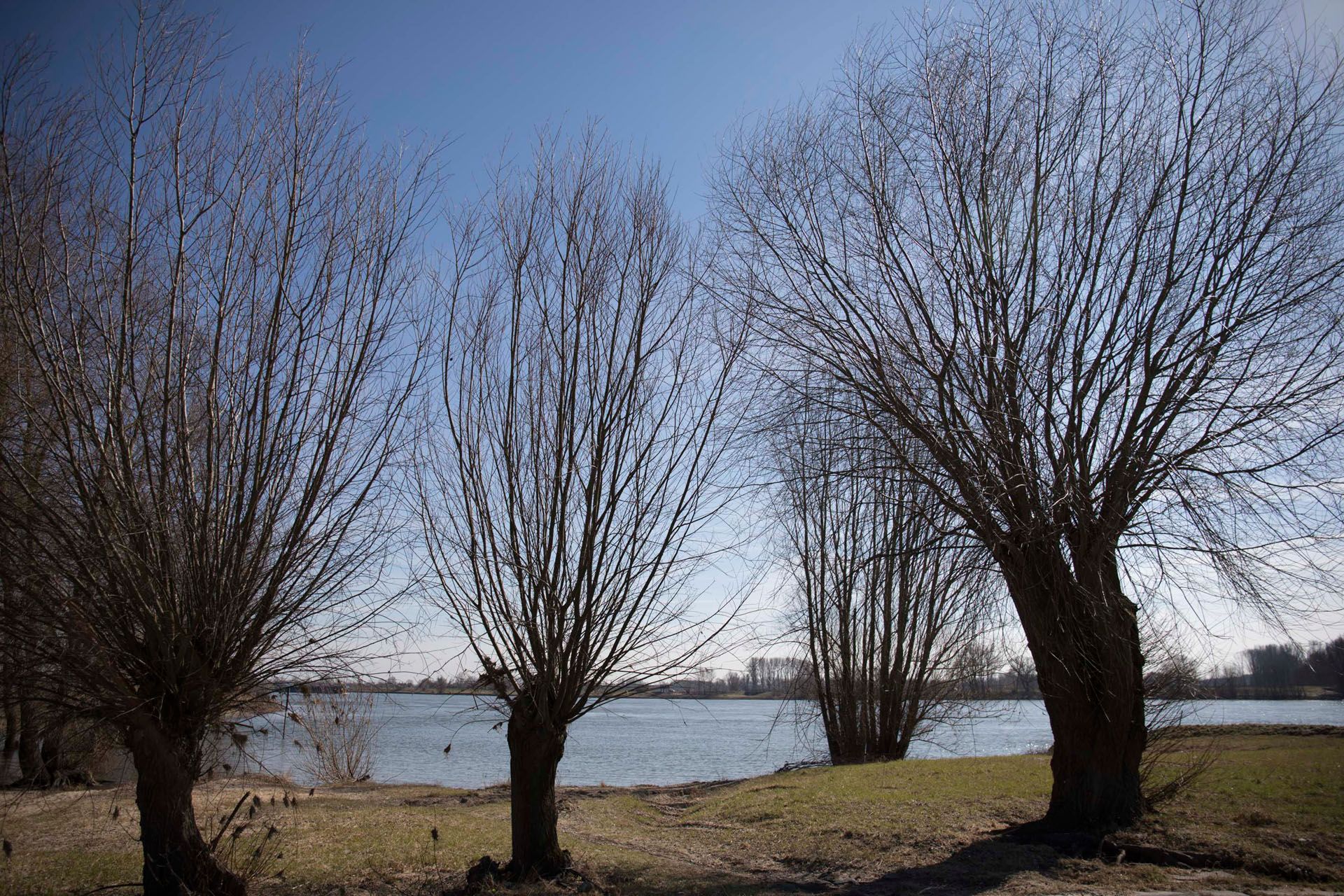
Idyll in the morning mistOn a journey of discovery with the pedelec
Morning fog lies over the Lower Rhine. "But it should clear up by midday," says the staff member at Landhaus Beckmann in Kalkar as she pushes my hire bike into the courtyard. And she gives me the locals' rule of thumb: "If the mist hasn't cleared by midday, it will stay." So I still have a few hours of hope for sunshine, and so I pedal on, immersing myself in the fresh early autumn air and the soft, whitish light. I want to spend the next two days exploring the highlights of the Lower Rhine - by pedelec. The area may be as flat as a pancake, but there are several dozen kilometres of cycling on the agenda.
The morning freshness revitalises my senses. And doesn't fog belong to the Lower Rhine like butter belongs to asparagus? As I leave Kalkar, I am confronted with scenes like those I admired in numerous photographs during my breakfast at Landhaus Beckmann: blurred pollarded willows lined up along misty streams, shadowy sheep grazing in the haze of the dyke grass, poplar avenues that end mystically in nothingness. The picture is broken up by dark purple and orange-coloured spots: elderberries and rose hips by the wayside are ready for harvest at this time of year. In between, extensive meadows and fields and here and there a goose farm, in whose free-range enclosure the rightful inhabitants share their breakfast with the uninvited jackdaws.
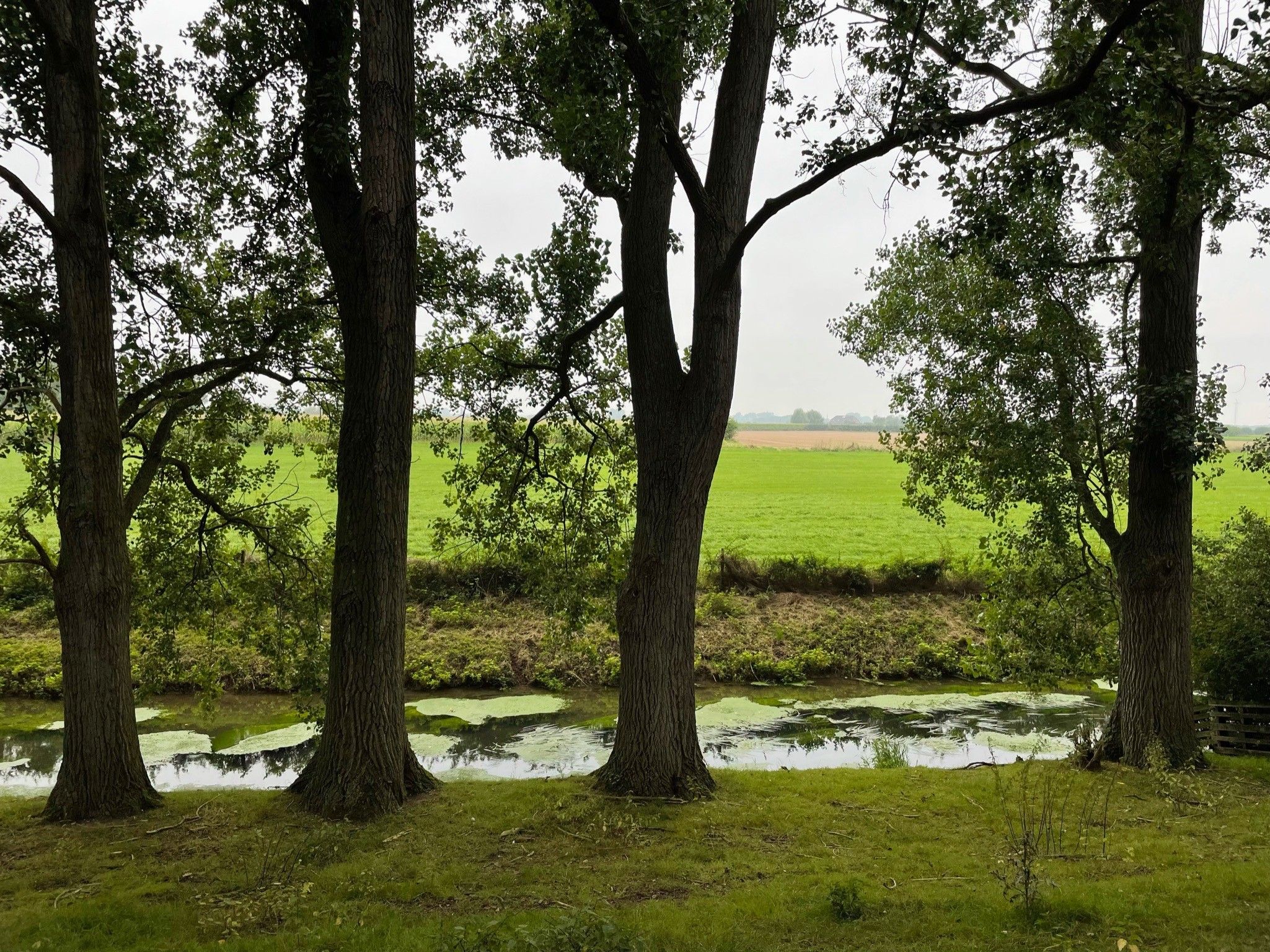
Up the Rhine to KleveOn the trail of Joseph Beuys
The Lower Rhine region is covered with a dense network of cycle paths, and the numerous signs with location and kilometre information can be found at every crossroads. Today they lead me up the Rhine to Kleve. I follow the route on a dyke that runs parallel to the country road, the highest man-made elevation far and wide. The large dark cloud of a flock of birds rises from a field to my left. It rises quickly, becomes denser and then looser, billows to the right and swerves to the left, forming figures like a single multiform organism. There are hundreds and hundreds of starlings, which now land on a high-voltage power line a little further on, formed into a black string of pearls. After a few minutes, they swoop down again, once more following a mysterious choreography, and the fascinating flying spectacle repeats itself.
I would have liked to continue admiring the formation flying, but the starlings are on their way south and I am travelling north. Today I'm cycling in the footsteps of Joseph Beuys, who would have celebrated his 100th birthday in 2021. My first stop will be Kleve, the town where Beuys grew up and to which he returned traumatised after the war to rent his first studio in the partially destroyed Kurhaus.
Enjoying art in KleveArt museum, historic gardens and a forest garden
Today, the neoclassical façade of the reconstructed building conceals the Museum Kurhaus Kleve, or MKK for short, which is dedicating two exhibitions to the town's famous son in the anniversary year 2021. Surrounding his former 70 square metre creative retreat, which is located in the west wing of the building, the exhibition 'Intuition! Dimensions of the Early Work' will be shown. I wander from drawing to drawing, marvelling at the delicate landscapes subsumed under the heading 'Poetry', the nude drawings and portraits of women and discovering some of his early material studies in a room dedicated to 'Natural Sciences'. The show conveys an idea of the intellectual cosmos of the young Beuys - the late, world-famous Beuys can be found in the second exhibition in the large foyer of the Kurhaus, in which some of the most important positions from the collection have been brought together.
At the end of the elongated hall, the massive sculpture 'Bathtub' awaits me. What a contrast to the fine pencil drawings I have just admired! The monumental sculpture, which is modelled on a mammoth tooth, was made in 1987, one year after the artist's death, according to his plans and is a mixture of bathtub, oven and sledge, all important motifs in Beuys' work. I walk round the lead, bronze and copper sculpture and almost physically feel the warmth it seems to radiate. Or is it the sun that is warming me, having fought its way through the fog and breaking through the long window front? Opposite the museum are the historic gardens, which Johann Moritz von Nassau-Siegen, the then governor of the Duchy of Cleves, had laid out in the mid-17th century, and the forest garden, which was added in 1782 by Julius Ernst von Buggenhagen, President of the Cleves Chamber, now bathed in radiant sunshine. Tamed, geometric natural beauty here and on the other side an arboretum of various exotic trees and shrubs, idyllically grouped around several ponds in the style of a botanical garden. After the extensive enjoyment of art, I am drawn back to nature.
Cultural jewel between history & artA visit to Moyland Castle
Around one hundred years after the Prince of Nassau-Siegen gave his love of the local flora an exemplary expression with the baroque park, the great philosopher Voltaire visited the Lower Rhine - and was also enamoured by the scenic beauty of the surroundings. Today, a hiking and cycling trail is named after him, which now leads me across meadows and fields from Kleve to Bedburg-Hau, or more precisely to Schloss Moyland, where I can follow the trail to Joseph Beuys and his art. The legacy of Germany's most important artist lives on in the Museum Schloss Moyland Foundation's collection of 6,000 works and the associated Joseph Beuys Archive.
I cross the moat of the imposing complex and take the steps up to the heavy entrance door in the shady inner courtyard. Voltaire met here with the Prussian King Frederick II in 1740, and I bet the two high lords also climbed the north tower to enjoy the kilometre-wide view. Shades of green as far as the eye can see! The buildings at the foot of the tower are bathed in warm afternoon light. The medieval, four-winged castle has undergone some striking remodelling in baroque and neo-Gothic styles. Broad, round towers with striking battlements meet slender, pointed, almost minaret-like additions. Architecture connoisseurs would probably describe the style as eclectic, but I like the fact that the architectural canon seems to have been suspended in this building. Beuys, the inventor of the expanded concept of art, might have felt the same way. After all, breaking rules and crossing boundaries was part of his biography.
Just like the penchant for shamanism. To mark the big anniversary year 2021, the museum is showing the exhibition 'Joseph Beuys and the Shamans'. Here, his artworks are juxtaposed with ethnological objects from indigenous shamanic worlds. I admire the drums made from painted reindeer skin, a group of wooden family spirits, a richly decorated walrus tooth and robes once worn by shamans. The opulently decorated garments are juxtaposed in the same room with Beuys' iconic felt suit, simple and grey. It is one of the artist's most memorable works and exerts an almost mystical attraction.
Alongside felt and grease, the sledge plays a central role in the painter and sculptor's work. I encounter it as a drawing, in brown cross colour, laden with moose and people. The sight of it transports me to the Eurasian steppe - time flees like the elongated animals in Beuys' woodcuts, and soon the inspiring, fulfilling day draws to a close. I end it on Kalkar's medieval market square, on the terrace of the traditional Ratskeller, whose chef first conjures up fish and then fresh pork on the table.
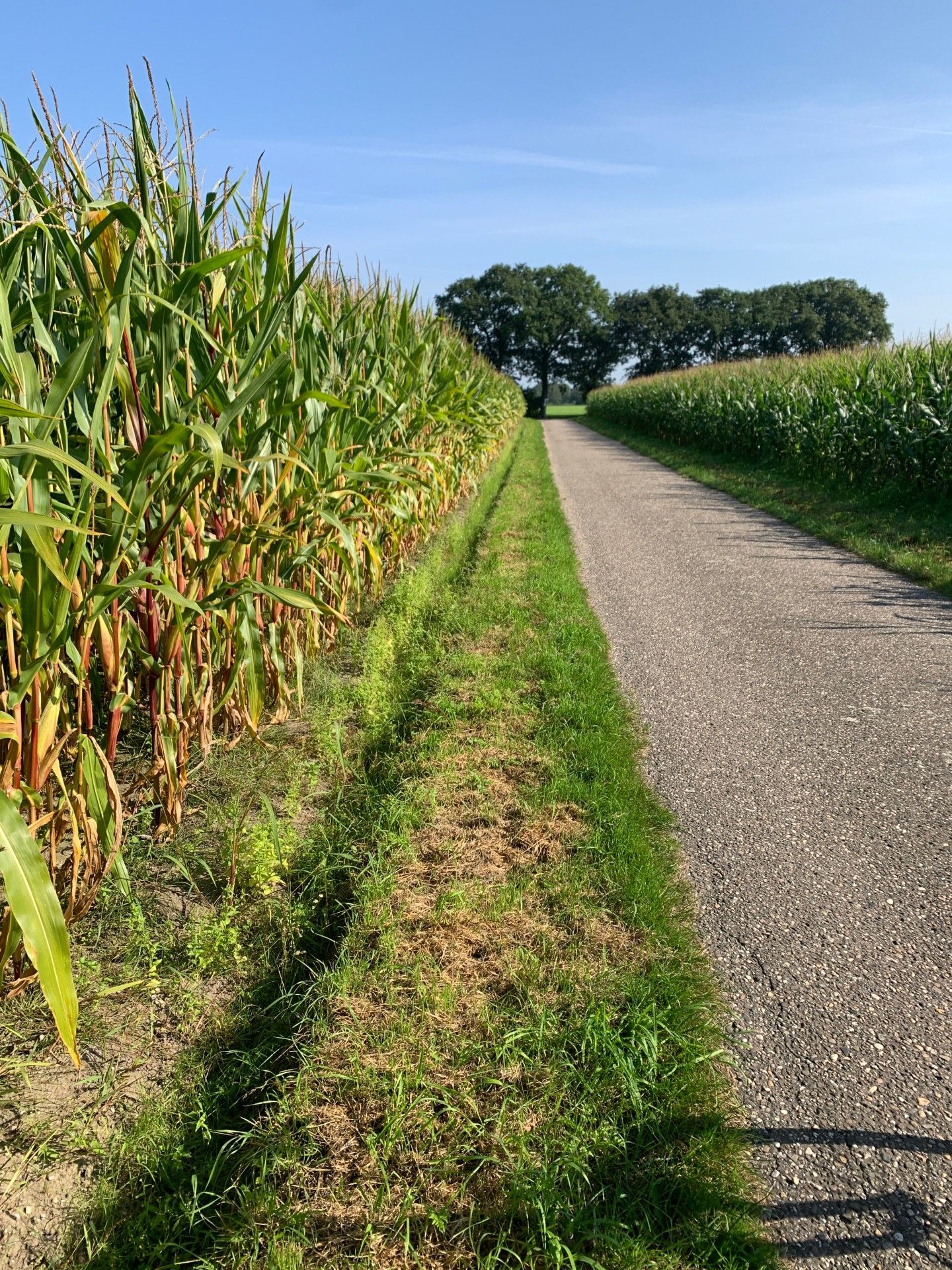
Panorama steeped in historyOn the way to Xanten
The next day, the sky stretches blue and wide over the flat land. Imperial weather! Today we are travelling to Xanten. The Roman camp there, the former Colonia Ulpia Traiana, was one of the most important cities in the Germanic provinces of Rome.
The cycle path leads from Kalkar through green meadows, orchards and pastures, meanders through cornfields and dips into small woods. As I pass the village of Marienbaum, I hear a familiar clatter. In a garden by the side of the road, a pair of storks have moved into a nest on a ten-metre-high stele and are now making a loud noise. The garden owner, who is enjoying the morning sun on a bench, is a great bird lover and lets me know that a pair of white-tailed eagles are nesting this year south of Xanten, in the RVR-NaturForum Bislicher Insel. And the small, fascinatingly colourful kingfishers are also said to be there. Unfortunately, birdwatching is not something you can do in passing, and today I have a journey back in time to ancient times on the programme. So on we go!
The cycle path meets a Rhine dyke and now runs parallel to the big river. I briefly try to keep up with the large barges travelling up the Rhine on my pedelec, but soon give it up again. Shortly before Xanten, two large lakes await me, the North Lake and the South Lake, which are part of a beautiful local recreation area. The water skiers and a wakeboarder showing off their tricks on the Südsee captivate my attention for a few minutes. The nearby harbour is bustling with people on Sundays. Behind them, the silhouettes of the amphitheatre and Xanten Cathedral rise up. What a panorama steeped in history.
Wonders of archaeologyTravelling through time in Xanten
The special thing about the Roman city of Xanten is that it was never built over. As a result, its remains lie hidden in the ground just a few centimetres below the meadows. A real stroke of luck for archaeology. In the city's heyday, in the second century AD, around ten thousand men and women lived here. Temples, baths, residential buildings, workshops, accommodation - countless original finds fit together like mosaic stones to form a picture of life in one of the largest metropolises in the Germanic provinces.
The stones that the Romans brought to Colonia Ulpia Traiana, named after its founder, thanks to the nearby harbour, came from the Rhine slate mountains, but Italian and Greek marble was also brought to the stone-poor Lower Rhine.
I climb the steps to the harbour temple, a fragment of which was rebuilt thirty years ago in its original size and using the original materials, lean my head far back and get an idea of the dimensions of the buildings in this city almost two thousand years ago from the height and scale of the columns alone. The uncovered thermal baths, which can be visited in the Roman Museum, also tell an eloquent story of the dolce vita of the city's inhabitants, including many former soldiers who had settled on the Rhine with their families after completing their national service.
I take a seat on the sun-warmed stone benches of the amphitheatre. The twin towers of the church of Xanten can be seen from here, but film scenes from 'Ben Hur' and 'The Gladiator' play out in my mind's eye. What battles might have taken place in this arena? One thing is certain: The end of the Roman city itself was violent. The migrating Franks attacked and overran the flourishing city at the end of the third century. The building materials, which were difficult to obtain, were carried off in all directions. Some were used in the construction of the neighbouring medieval town.

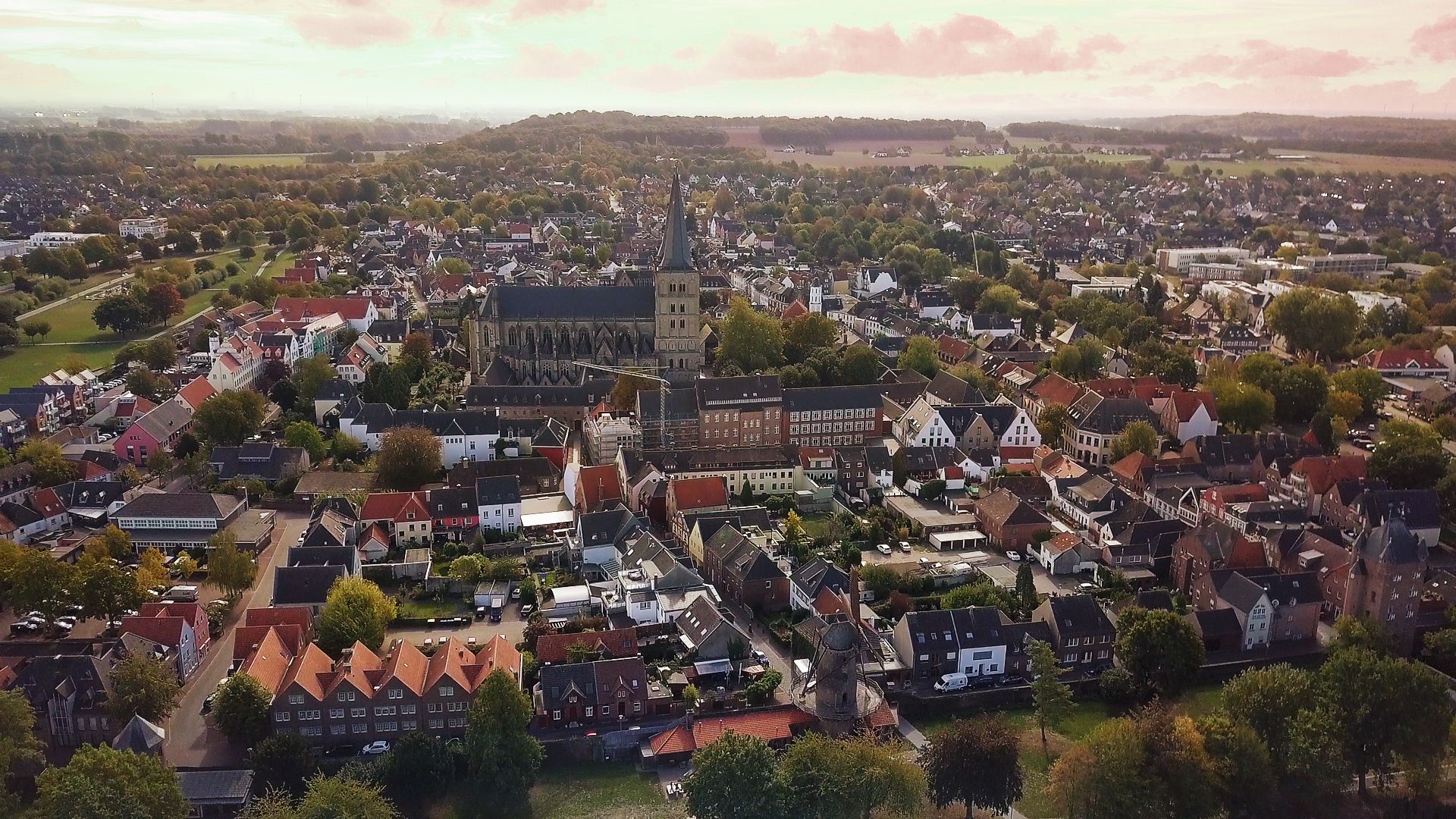
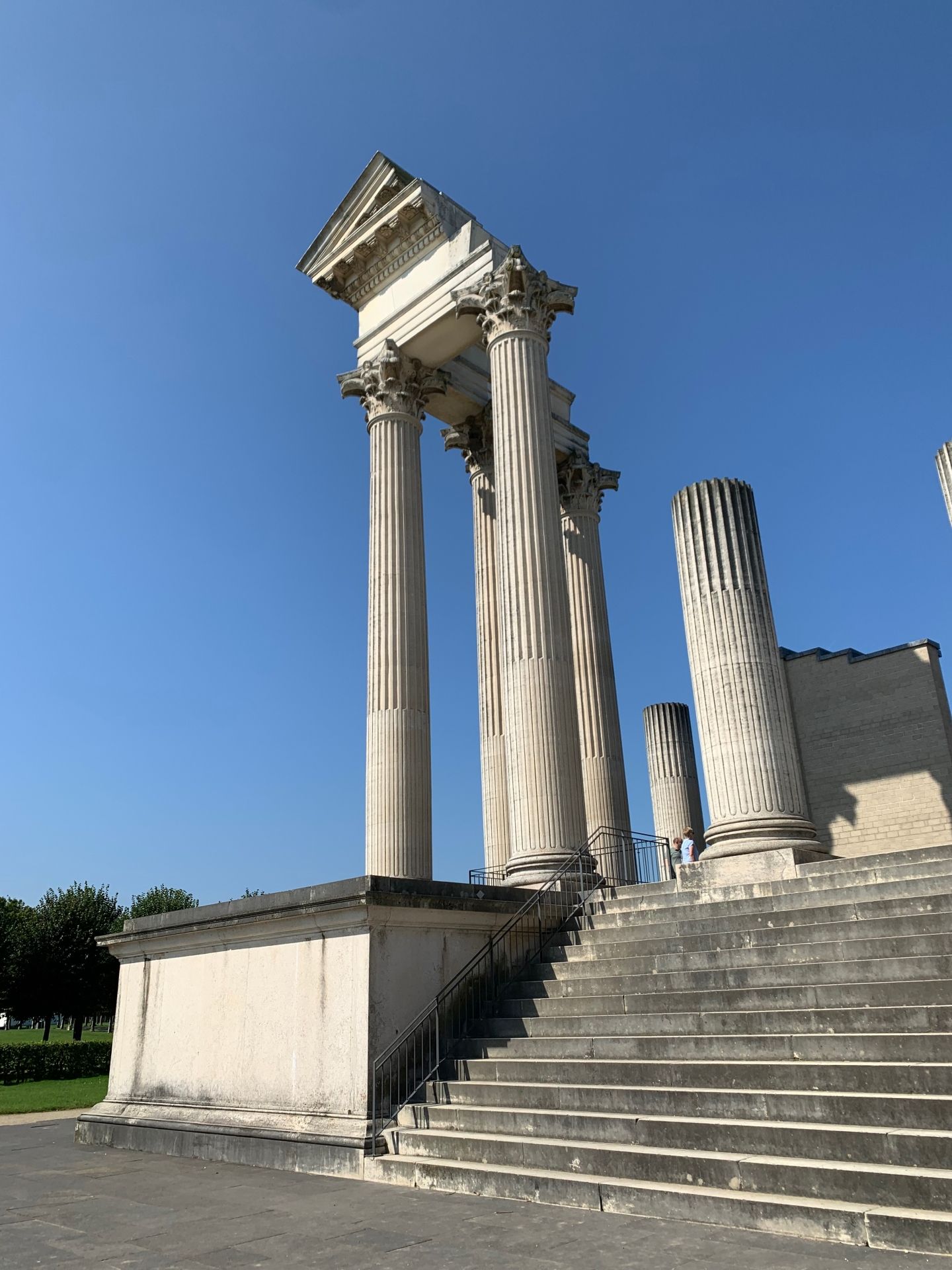
I leave the LVR Xanten Archaeological Park and follow the trail of stones. The streets of the pedestrian zone are bustling with activity. Sunday excursionists swarm around an ice cream parlour, but I'm in the mood for something savoury. The vegan restaurant Petersilchen is very popular and after a large plate of mashed potatoes and fried endive salad, I feel energised for one last visit.
So it's off to the collegiate church of St Viktor, also known as the cathedral of Xanten because of its size and imposing appearance. The evening sun shining diagonally through the coloured windows bathes the interior of the five-nave Gothic basilica in red light. It took a whole 281 years to build! The magnificent high altar with its jewelled shrine, one of the oldest in the Rhineland, is considered the most important shrine in the cathedral treasury and is said to contain the remains of St. Victor. And he has been resting here for a long time, since 1128, I am impressed. What a comprehensive history lesson I have been given today! I leave the cathedral and the surrounding immunity district through the cloister and push my bike out of town through the Klever Tor. I plan to visit the Abbey Museum on my next trip, as well as take a dip in the South Sea and visit the sea eagles on Bislicher Island. I'll do as the migratory birds do. I'll be back.
Ilona Marx has already travelled to numerous metropolises in NRW and around the world. The heart of the author, copywriter and trend consultant has had a passion for culture, fashion and design since her youth.
